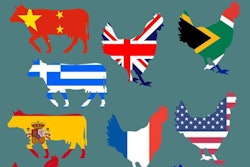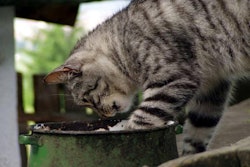
Pet food sales in Mexico increased 13.7% in 2015 to MXN42.6 billion (US$2.28 billion), rebounding from the effects of a value-added tax of 16% enacted by the Mexican government in 2014. While the volume of pet food sold remained flat, the value of sales grew robustly, even after accounting for inflation (net 10% growth). That matches Mexico’s ranking among the top 10 pet care markets globally, as well as among the fastest growing.
This data and other insights on the Mexican pet food market came from Ivan Franco, owner of Triple Three Consultancy, during Foro Mexico 2016, held June 16-17 in Guadalajara. I was fortunate to attend the conference and learn more about pet food in Mexico.
For example, dog food dominates at 96% of the market, or MXN40.9 billion (US$2.195 billion); cat food registers at only MXN1.7 billion in sales (US$91.24 million). Together the two segments produce slightly more than 1 million metric tons in terms of volume, Franco said. This is predominantly dry pet food, with 88% of dog food sales and 84% for cat food. The shares of moist or wet food are 11% and 16%, respectively, with snacks and chews registering 1% or less.
Surprisingly, considering the market is still developing, Franco’s data shows that superpremium products account for 19% of dog food sales, with premium products at 66%; standard (economy-priced) products weigh in at only 15%. For cat food, the breakdown is superpremium at 7% and premium at 93%. That could be because the Mexican market is still characterized by a relatively low percentage of pets eating commercial pet food: less than 40% for dogs, according to Euromonitor. Those pets that are fed commercial products probably live with owners in the larger cities of Mexico, who likely have the incomes to afford higher-priced products.
In fact, an ongoing problem for the Mexican market and its continued growth is the small percentage of dogs and cats actually owned, Franco said. In a later roundtable session on the Mexican pet food retail scene, Ana Laura Flores of Pet Your Brand, a marketing consultancy, presented data indicating that of 20 million dogs and 5 million cats in Mexico, only 46% of dogs and 12% of cats actually live in households; the rest are all strays. The good news is that the number of household pets has increased 12.5%, much higher than the growth of the human population in Mexico.
The study Flores quoted from, which was undertaken by Pedigree, Effem Mexico’s (Mars) leading dog food brand, in partnership with Euromonitor, also showed that 52 million Mexican households now have pets, or 29 million families, and 87% of pets owned are dogs.
Because these pets are more likely to live with owners in urban areas, those owners not only gravitate toward superpremium and premium pet food products; they also, like many other pet owners around the world, are more involved and knowledgeable about what they want in the pet foods they buy. Franco referred to Mexican pet owners as more “participative shoppers” now seeking the “next generation of pet food” and focusing on health and nutrition, especially protein and vitamin content.
Luis Felipe Moreno of Grupo PM/PFI, who moderated the pet food retailing roundtable, said demographic and consumer changes—such as longer life expectancy, more homes without children, couples having smaller families or delaying having children, a rising number of single parents, and the influence of fast food and other convenience outlets—have created a “different retail system, now driven by consumers. The task is to bring them the products they are asking for.”
That task falls to 100 pet food companies in Mexico, which Franco broke down into 22 producing their own brands, 19 that make their own brands plus import others, 10 that do import only, 12 sub-contractors (not really well defined by him) and 37 companies doing third-party production. In terms of company shares of the market, Effem Mexico leads with 38%, followed by Nestlé Purina at 34%. Leading domestic producers include El Nogal and Malta Ceylon.
The predominance of private label pet food manufacturers could stem from the fact that the largest retail channel for pet food in Mexico are price clubs, garnering a 60% share. The veterinary channel accounts for 14% of sales, followed by pet specialty at 13% and “traditional” markets at 8.7%.
Though its retail scene and leading product categories and segments may differ from those in other markets, Mexico definitely shares one key characteristic with many pet food markets around the world: value growth without accompanying volume growth—a sure sign of premiumization taking hold. “This is good for the industry,” Franco said. “It means overall improvement on the product side, which consumers are responding to.”


















